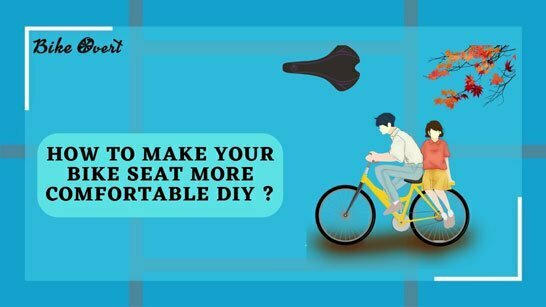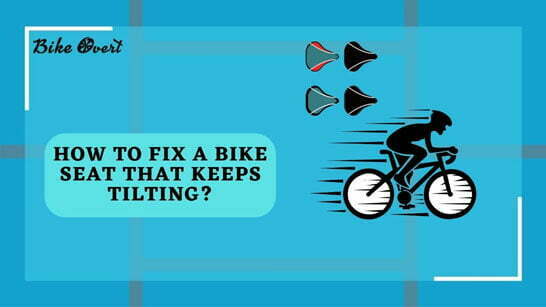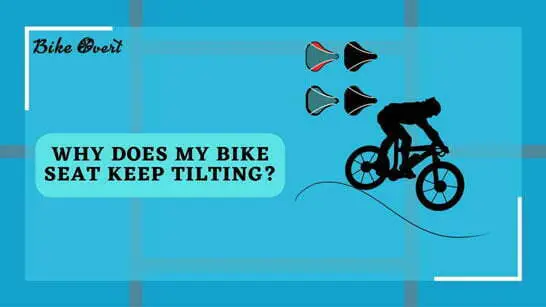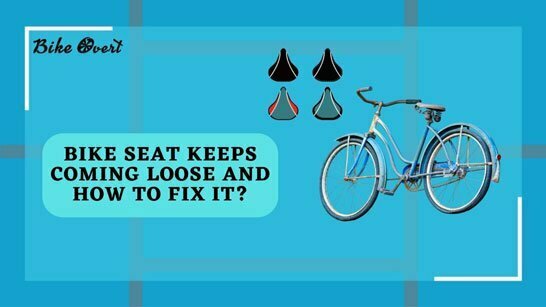Why are bicycle seats so small? The history of bicycle seats. Is a bigger bike seat is better? How can I make a bike saddle more comfortable?
Many people may believe that bicycle seats are small, but why is it that they’re so small? Some reasons for the size difference could be to accommodate different riders and to provide a more stimulating and comfortable ride. The smaller size can provide a better fit for those who have a shorter distance between their seat and the handlebars. Additionally, bicycle seats are designed with wider ends to avoid chafing or injury from contact with the rider’s thighs. The following information will help you choose which type of bike seat best suits your needs:
The history of bicycle seats
The history of bicycle seats has often relied on the inventor’s own body. When the first bikes were created, frames were made to fit the person riding it which means that the seat was designed for someone of average size.
With changes in cycling technology, manufacturers are designing seats for smaller people to make cycling more accessible to everyone. In addition, some companies have started making bicycles specifically for children and adults who need special seating due to health issues such as back pain.
Types Of Bicycle Seats
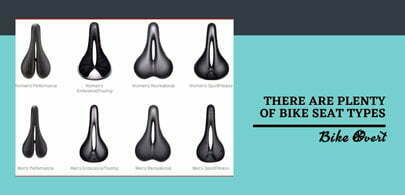
There are two types of bicycle seats available on the market today; padded and non-padded. Padding is added to some models in order to make them more comfortable.
Padded Seat – This style has a foam cushion for extra comfort, usually located at the back end of the seat where it meets the rear wheel. It can be either one piece or divided into sections. The advantage of this type of design is that you get maximum comfort without having to add any weight to your bike.
However, if you ride long distances over rough terrain then you will need to consider how well the padding holds up against bumps and other impacts.
Non-padded seat – These types have no padding on their surface area. They tend to be made from metal or plastic with an ergonomic design. The most common type of this kind of bike seat is called “drop bars” because there’s a drop-down bar between your legs which you use to hold onto while riding.
Bike Seat Styles
The bicycle seats are one of the most overlooked pieces of equipment. They are often overlooked because they are so small, but there are many important benefits to using a bicycle seat.
Firstly, they are made for the comfort of cyclists. The bicycle seat was made to support you in all the right places.
Secondly, it has been proven that sitting on a bike seat can be beneficial for your health since it encourages proper posture and alignment of your spine. There is a big variety of styles in bike seats according to different demands.
Bike seat sizing
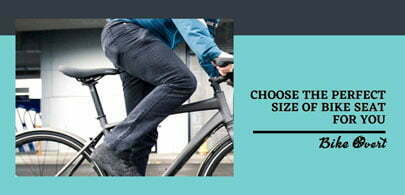
A bicycle seat is one of the most important pieces of equipment on a bike. It provides support for the rider’s buttocks, and may even make or break their ride. The size of a person’s seat can range anywhere from 12 to 18 inches in width. However, most seats are sized at 16 inches for children, with an option for 17 inches if they are taller than 4’8″.
The problem arises when people start shopping for bikes as adults. They often buy a smaller-sized adult bike because they think this will fit them better. This isn’t always true; many larger riders have found that a small frame fits well enough but doesn’t provide adequate legroom.
In addition, some large riders find it difficult to reach over the top tube while riding due to the height difference between themselves and the handlebars. A bigger saddle is also recommended by some experts who believe that a wider surface area reduces pressure points and helps prevent injury
Bike seat foam density
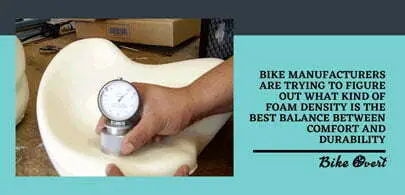
Bike seat foam density is an important factor to consider when choosing a bike seat. Many bike enthusiasts and bike manufacturers are trying to figure out what kind of foam density is the best balance between comfort and durability.
Foam density is typically measured in pounds per cubic foot (lbs/ft3). A denser foam, such as 3-4lbs/ft3, is usually more comfortable and works well for a wider array of body types. However, this kind of foam does not last as long because it compresses less.
The density of bike seat foam has to do with the level of firmness. Bike seat foam densities are usually classified as soft, medium or firm.
Soft is good for people who may experience discomfort when sitting for long periods of time. Because it does not put pressure on your tailbone.
A medium-density foam will often provide the best balance of comfort and performance. A harder density foam can be used if you want something that lasts longer. The most common type of bicycle seat foam is 2 lbs per square inch (psi). That means it’s about 1 lb/foot (lbs/ft3). This is what we recommend for most riders.
Is a bigger bike seat better?
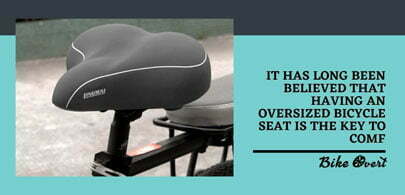
Bicycle seats may not seem like they matter, but in reality, the small size of most bicycle seats is detrimental to riders’ health. The average seat height for a standard bicycle is 73 inches. This height places the rider’s crotch four inches above their iliac crest.
For men, this can be too high and make it impossible for a man’s body to achieve a natural angle which will result in an uncomfortable ride.
It has long been believed that having an oversized bicycle seat is the key to comfort. But, what if it’s not? Does a bigger bike seat guarantee more comfort? The answer is no.
One of the most common misconceptions about bike seats is that bigger is better. Do not be fooled by this one! Remember, comfort comes first! If you are not comfortable, nothing else matters.
A new study looked at whether reducing the size of the saddle on a bicycle would decrease the likelihood of experiencing these symptoms and found that it did not impact them.
Why do girls have bigger bike seats?
Girls often have larger bike seats than boys. This is to accommodate their wider hips and shorter inseams. This also makes it easier to maneuver the bicycle for girls, who typically sit farther back on the seat. The extra space between the seat and handlebars also helps prevent wrist and shoulder strain.
But girls can make use of the lighter-weight frames and reach the ground easier while pedaling because they are shorter. This means that bikes designed for women actually need smaller bike seats to provide that perfect fit.
Do I need a wide bike seat?
Many cyclists are not aware of the sizing of their bicycle seats, which is why it’s important to know if you need a wide bike seat. Do you have a wider than average rear end? Do you want to sit comfortably on your bike?
It is known that a wide bike seat can be helpful for certain people. Promoting comfort and pedaling efficacy, people with back pain, obesity, narrow hips, and others may find relief from a wide bike seat.
With the wide width providing more space for the thighs and crotch area. It can help alleviate pressure points that come about when pedaling. For these reasons, some riders use wider seats to make their rides more comfortable.
Widebody seats are now available for many bikes. Wide seats can often negate the need for buying a wider bike frame or creating an extension on the bicycle seat itself. A wide seat will stop any pressure points that are caused by pinches between your behind and the back of the saddle.
How do you sit on a bike so it doesn’t hurt?
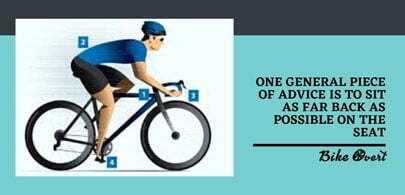
Getting the proper fit and position on a bike is important for preventing discomfort. One general piece of advice is to sit as far back as possible on the seat. With your weight distributed evenly over the seat and pedals.
Adjust your seat height so that when you straddle the bike, you can reach the ground with each foot flat. The handlebars should be level with or lower than your hips, and you should lean forward slightly from the waist.
If you have never biked before, it is often hard to know how to sit on a bike. It can be uncomfortable if your bottom hurts after biking for just ten minutes. But fortunately, there are ways to avoid the pain.
If you feel any pressure in your buttocks while sitting down, try adjusting your position by moving one leg at a time until you find an ideal balance between comfort and stability. You may need to experiment with different positions until you get comfortable enough to ride without feeling too much strain.
There are many reasons why somebody might find it difficult to ride a bike comfortably. The most common reasons for this are saddle discomfort, saddle height, saddle position, cleat position, and bike fit. If you are experiencing hurting problems, then try all that has been told.
Why is a hard bike seat better?
Some riders are so happy with their bike seats that they never want to change it. A new bike seat can provide ample comfort for some riders. But some find that a new bike seat can be an uncomfortable experience.
The most common bike seats are made of hard plastic, the kind that is shaped on the front of the rider’s pelvis. Soft-backed seats are more comfortable for some riders because the padding flexes with your weight on it.
However, a hard bike seat is better for your back and lessens the risk of injury. A harder seat also provides more stability. It’s easy to adjust to a hard seat by just riding for an hour or two. If you’re not sure which type of seat works best for you, try both types before making any changes. You may like one style over another after trying them out.
Some people think that a seat that is too hard is a good thing. They believe that a seat with excessive padding will make the bike heavier. That makes the cyclist’s ride less responsive.
They also believe that a hard bike seat can help prevent numbness during long rides. Those who agree with this argument often point to the fact that this style of the seat was commonly used by cyclists in road races as far back as the 1890s.
Do all bike seats fit all bikes?
It is a common misconception that all bike seats fit all bikes. In reality, the dimensions of the seat and the distance from the seat post to the handlebars can affect how comfortable a ride is.
The distance from the seat post to the handlebars should be no more than three inches in order for a rider to have a safe and comfortable ride.
Bike seats come in a wide variety of shapes and sizes. Many bike seats can be adjusted to accommodate the different shapes, sizes, and frames of people. Rear-mounted bike seats provide more back support than front-mounted bike seats do, but they also limit the rider’s ability to steer and brake.
If you have a mountain bike with a wide seat, then most likely you will need a wider bike seat as well. With the wide range of bike seats available on the market today, it can be overwhelming to select the right one for you and your bike.
Do all bike seats fit all bikes? No!
Read the article to prevent your bike seat from coming loose.
Why are bike saddles so narrow?
Bike saddles are designed to fit the shape of your body and provide maximum comfort while cycling. They are typically narrow to avoid pressure on any one area of the body. The seat is often made from a soft material such as leather or gel to prevent chaffing or other discomforts.
The narrow shape of a bike saddle is as important as its width. The narrowness of the saddle allows riders to keep their crotch muscles contracted and close together. It spreads the pressure from the perineum over a greater area. This means that there is less chance of developing pain in the sensitive pelvic region.
Does cycling make your butt bigger?
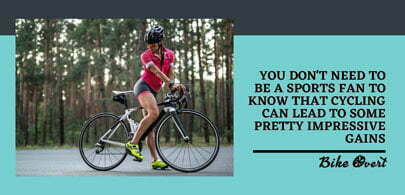
Does cycling make your butt bigger? This is a question many women have, but the answer isn’t clear. It is not uncommon for there to be pain or discomfort in your groin area when cycling. But it could just be the way you are sitting on the seat.
When you are pedaling, there is an upward and downward force on the pelvis which places pressure on each side of the hip socket.
Studies have shown that cycling may enlarge the buttocks and hips of some women. Doctors have found that these changes are due to fluid retention in the hip area.
When you use your arms to pedal, it creates pressure on the pelvis, which leads to fluid retention in this area. This can cause a woman’s hip size to increase by two inches during intense exercise periods.
Does your bum get used to cycling?
People who live and work in cities all around the world usually rely on bicycles to get them from place to place. And while it’s not always easy, we take comfort in knowing that we’re doing our part for the environment and minimizing our carbon footprint. But one thing we never considered was whether or not cycling would change our bums.
If you are the owner of an ample bottom, you might be wondering if your tush is getting used to cycling. After all, there are plenty of other people out there who have done so. Some people even claim that their bum has become firmer or more toned as a result!
However, according to experts in the matter, it’s not possible for your rear end to adjust to cycling; the two aren’t really related.
While many people will find that their bum gets used to cycling with time, others may find that they eventually need to switch up the type of bike they’re riding or change to an activity that doesn’t involve sitting down.
For those who are trying different bikes and still experience pain in their backside, it might be worth making changes to their saddle height.
What is a good distance to bike for a beginner?
For a beginner, any distance is good, but the more miles you bike, the better off you will be. You can start with one mile if you are not feeling too confident about biking. When starting out on your bike ride, make sure to start slow and make sure that you’re in a safe place to bike.
Many people who are new to biking or want to start biking for exercise or another reason may not know the best distance to bike. It is usually safe to take it slow for the first few weeks. So you should only ride a little bit longer than what feels comfortable. You can even split up your ride, by riding for one hour in the morning and again in the evening.
A good distance to bike for a beginner is about 10 miles. New cyclists can ride around their neighborhood, attend a community event, or start at their home and ride around the block.
For more ambitious beginners, they can go on the local bike trail with family members. As your biking skills improve over time, you can double that distance.
Why do women’s bike seats have holes?
The bicycle seat for women may seem like a frivolous accessory. But the purpose is to make it easier for female riders to balance their weight between their feet and buttocks.
With male riders, the weight is distributed evenly between the feet and buttocks, because of the difference in length between men’s and women’s legs. This difference can make balancing more difficult for the shorter-legged female rider.
Women’s bike seats come with holes because they are shorter than men’s, and their weight is distributed differently. These smaller riders need more cushioning to be comfortable on the bike, and the holes provide that extra padding.
It’s always best to take a test ride before purchasing a new bicycle. But if you haven’t yet purchased your first one, there should be some other noticeable differences between women’s and men’s models.
How can I make my bike saddle more comfortable?
Many people experience discomfort when using a bike saddle for a long time. This discomfort can be caused by pressure points from the saddle, vibrations from the bike or accidents that may have occurred to your bottom.
There are a number of ways you can make your bike saddle more comfortable to use. Including: installing a soft gel seat cover, buying a cushioning pad, adjusting the height and angle of your seat according to your body type, and moving your seat forward or back on the rails.
You can read the article where you will discover tips on how you can make your bike seat more comfortable by stopping it from tilting.
Conclusion
Bbicycle seats are not designed to be comfortable because they are made with the intention of riding for short intervals. The function of the bike seat is to provide you with a stable place to sit while in motion, not an aesthetic or ergonomic one. So if you are riding for more than 5 minutes or consistently for more than 30 minutes, you will want to make the switch from your regular bicycle seat.
Bicycle seats are small in order to allow for more pedaling room and comfort when riding a bike. While there is less research to make a concrete conclusion, it seems like manufacturers take into consideration the size of the rider when designing seats.

